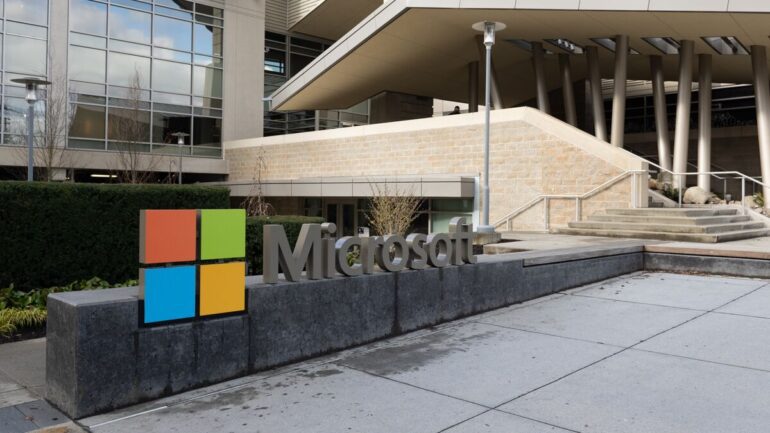TL;DR:
- Microsoft integrates Copilot AI into its field services platform for frontline workers.
- Copilot streamlines workflows and offers real-time insights to supervisors.
- Originally for generating text, Copilot expanded to Dynamics 365 service for technicians.
- Service requests through Outlook are automatically enriched with historical data.
- Recommendations for field tasks are based on travel time, availability, and skills.
- Technicians update work status and provide real-time progress updates.
- Enhanced visibility enables better project management and task prioritization.
- 3D spatial annotations within Teams video calls aid issue resolution.
- Lili Cheng, Microsoft’s VP, highlights AI’s impact on efficiency and productivity.
Main AI News:
In a groundbreaking move, Microsoft has propelled generative AI from the office desk to the frontlines, as its innovative Copilot AI assistant becomes an integral part of its field services platform. This strategic integration not only promises to optimize workflows but also empowers supervisors with real-time insights into the activities of their field technicians.
Originally unveiled in March, Copilot made its debut on Microsoft 365 enterprise platforms, initially catering to desk-bound employees seeking AI-generated content for their PowerPoint presentations. It is important to note that this offering is distinct from the similarly named GitHub service. However, the latest development marks a significant expansion as Copilot makes its foray into the Dynamics 365 service ecosystem, a cornerstone of various fieldwork domains ranging from cable technicians to electric repair personnel. Industries such as facilities management, manufacturing, and healthcare are poised to reap the benefits of this transformative addition.
The integration’s mechanics are as ingenious as they are practical. When service requests are dispatched via Outlook, Copilot seamlessly populates essential information, shedding light on the frequency of a particular customer’s interactions with the service. This data-driven feature equips supervisors with insights into historical interactions, thereby enhancing decision-making. Ahead of dispatch, supervisors are empowered to meticulously review work orders, ensuring accuracy and precision. A noteworthy enhancement scheduled for this fall entails the recommendation engine. It will leverage travel time, availability, and skill set criteria to propose the most suitable field worker for a given task.
The symbiotic relationship between Copilot and technicians becomes even more evident in the field. Technicians can promptly update their progress, signaling their arrival at the designated site and providing real-time insights into the issue they’re addressing. This data-driven approach offers project managers unprecedented visibility, enabling effective task prioritization. Moreover, Copilot streamlines the retrieval of job location data, minimizing cumbersome steps. Additionally, the AI marvel orchestrates comprehensive service recaps, empowering managers with succinct overviews.
The customer experience is poised to evolve dramatically as well. Clients will enjoy heightened visibility into the whereabouts of their assigned technicians, while field workers will be unburdened by mundane administrative tasks. However, it is imperative to acknowledge the potential challenges that come with enhanced visibility. Similar technological advancements in the past have led to meticulous monitoring of workers, prompting valid concerns raised by Google employees regarding potential intrusions.
Navigating challenges, Microsoft reaffirms its commitment to comprehensive solutions. If a technician faces a roadblock, the company’s ingenious incorporation of 3D spatial annotations within Teams video calls proves to be a game-changer. These annotations enable technicians to highlight issues visually, streamlining communication and understanding. By encircling a problem area in a video call, technicians can convey precise details, eliminating the need for convoluted verbal descriptions. This feature synergizes seamlessly with the existing remote assist capabilities of HoloLens 2 Teams video calls.
Lili Cheng, Corporate Vice President of Business Applications and Platform at Microsoft, eloquently underscores the revolutionary impact of bringing generative AI to fieldwork. She emphasizes how this innovation empowers frontline workers, enabling technicians to operate more efficiently and intelligently. Cheng astutely observes the prevalent reliance on traditional methods in fieldwork and conveys Microsoft’s ambition to expedite and optimize these processes.
Conclusion:
Microsoft’s strategic integration of Copilot AI into field services redefines efficiency and visibility. The expansion of Copilot from generating text to real-time task optimization and enhanced visibility signifies a major shift in the market. This move not only streamlines operations but also underscores Microsoft’s commitment to empowering frontline workers and revolutionizing traditional fieldwork methods. The technology’s potential to reshape workflows and decision-making processes will likely stimulate transformative changes across industries, driving competitors to innovate and embrace similar AI-driven enhancements.

